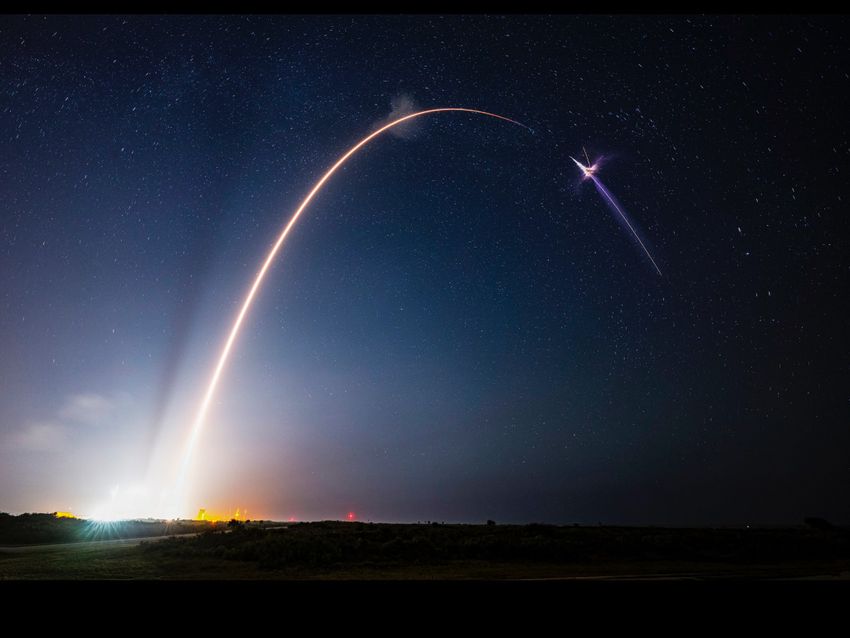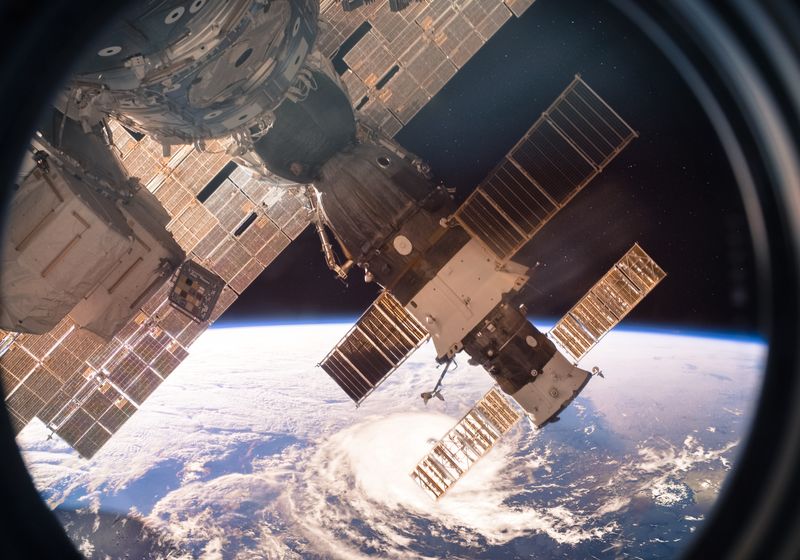A high school team sent their science experiment to space for a month.
It started with a poster on the classroom board of William Heinen, a biology teacher at St. Francis High School in La Cañada Flintridge, California, that called for all students to participate in a competition organized by the school for a once-in-a-lifetime experience.
The inaugural Knight Skies Program was created to spark student interest in space science and STEM fields. Spearheaded by space enthusiast and religious studies teacher Mark Fredette, in partnership with Dream Up to Space, the STEM education branch of Voyager Space Explorations, the program offered students a unique opportunity to contribute to real-world space research by sending their work to orbit on the next SpaceX launch. The goal: design an experiment for an astronaut to conduct on the International Space Station (ISS).
The poster caught the attention of several students, including then-sophomores Luca Bonnici, Carlos Ferreira Gaxiola, and Danial Jamshidi, who teamed up with other classmates and began brainstorming project ideas.
Team E.coli consisted of teachers William Heinen and Mark Fredette, alongside students Danial Jamshidi, Luca Bonnici, Carlos Ferreria Gaxiola, Alec Heberger, Robert Milton, Vaughn Cross, Malik Husaini, and Christopher Baghassarian.
Courtesy of Kiana Aran, St. Francis High School
“We settled on protein synthesis in microgravity,” said Bonnici. Soon, they reached out to different research labs across the country to help them realize this experiment and eventually partnered with researchers at Harvard University. Heinen worked closely with the team to teach them the concepts that they were using in their experiment and how these ideas were relevant.
The team designed a project to see how well Escherichia coli produced green fluorescent protein (GFP) under microgravity conditions compared to earthbound E. coli. Gaxiola added that during their literature review, they found that while some research explored E. coli and GFP in vacuum simulations on Earth, it was unclear how real microgravity conditions would pan out. They hoped that microgravity could boost protein production, with potential implications for future biomedical manufacturing, such as insulin, in space. Thus, Team E. coli was born.
After two months of preparation, the team presented their project to a panel and cinched the coveted opportunity to launch their work into space. The next hurdle was to fundraise $15,000 for the cost of delivering the experiment to the ISS via Voyager. So, Team E. coli expanded their team and began crafting a concise narrative to convince friends, family, and strangers to fund their project. The teachers and parents also helped coordinate these efforts and then the team set off for Florida to witness their experiment launch aboard SpaceX CRS-31 on November 4, 2024. Watching their project rocket into space was a surreal and unforgettable moment for all team members.

Team E. coli watched from the control center as their experiment blasted off into orbit in November 2024.
Andre Ngo
This experiment was contained within a mini space lab called a Mixstix, which contained E. coli and culture media. The Mixstix kept its contents separate until reaching orbit. Once in space, the astronaut would initiate the experiment. At the same time, the earthbound team would begin their experiment, running their own Mixstix in parallel for a month.
After the experiment’s return in December, the Harvard University researchers measured the levels of mRNA of GFP in space and earthbound samples. The results were beyond expectations. “We saw [that] our mRNA levels were almost three times as much in space [than] on Earth,” said Jamshidi.
Now seniors, the team members are busy preparing their findings for publication. They’ve been meeting regularly to work on a manuscript, with support from Jamshidi’s mother, Kiana Aran, a biomedical engineer at the University of California, San Diego.
Looking back on their experience, the team expressed deep gratitude for Fredette’s role in making the opportunity possible, Heinen and the researchers’ guidance, and the support of their peers and parents.
Aran remarked that she was impressed by the team’s efforts. “It was not only the technical [scientific] aspect, but leadership…also the aspect of science communication.” Jamshidi also added that the team hopes to keep the program’s momentum and “pass on this kind of amazing opportunity for other students to pay it forward.”

